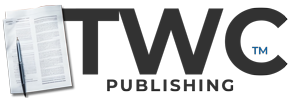HRM: A Case Study on Compliance with Laws and Regulations
No Fee
| Case ID: | HRM-TECHNO-20230730-1-V1 |
|---|---|
| License: | CC BY-NC-SA 4.0 |
| Pages | 3 pgs |
| Case Study Analysis | Not Included |
| Teaching Notes | Not Included |
| Ai Level | Content co-authored with the OpenAI API |
| Category(s) | Human Resource Management: 10/10 |
This case study dives into the challenges faced by TechnoEdge, a rapidly expanding tech startup, in managing its Human Resource (HR) compliance across multiple regions. As the company grows, the HR team, led by Lisa, struggles with navigating the complexities of local and international employment laws. The case presents various potential solutions, including implementing compliance software, hiring a legal expert, or investing in training and development, prompting students to consider each option’s cost and long-term impacts. This case offers an opportunity to explore real-world HR issues, encouraging critical thinking and strategic decision-making.
"Case Disciplines," with each one rated out of 10 on how much the case aligns with the category:
- Human Resource Management: 10/10 - This case is centrally focused on HR management, more specifically on the issue of legal compliance in HR practices within an international tech startup. It discusses the operational intricacies of the HR department, how it deals with employment laws and regulations, and possible solutions.
- Ethics: 8/10 - While not the primary focus, the case does touch upon ethical issues concerning legal compliance and adherence to local labor laws. The potential consequences of non-compliance, such as lawsuits and fines, point to ethical implications.
- General Management: 8/10 - The case study involves decision-making and strategy formulation, which are key aspects of general management. It also highlights the role of management in ensuring legal compliance.
- International Business: 7/10 - This case involves a tech startup expanding internationally and facing complexities arising due to different local and international employment laws.
- Strategy: 7/10 - Lisa's approach to addressing compliance issues, whether through training, hiring a legal expert, or implementing compliance software, involves strategic decision-making.
Weaknesses of this Case Structure
- Lack of Quantitative Data: Although the case outlines the cost implications of each proposed solution, it lacks broader quantitative data. For instance, it doesn't present statistical data about how common these issues are in startups or the frequency of lawsuits due to non-compliance.
- Scenario Details: The case study could benefit from more detailed descriptions of the actual problems faced. For example, concrete examples of how local employment laws varied, or specific instances of where the company failed to comply, would help paint a clearer picture.
- Stakeholder Perspectives: The case primarily focuses on Lisa's perspective. Inclusion of other viewpoints, such as those of employees, management, or the legal team, could enrich the analysis.
- Case Resolution: The case ends with a decision to be made, and it doesn't follow through to the impacts and results of that decision. A good case study often includes follow-up information to assess the effectiveness of the chosen solution.
Strengths of this Case Structure
-
- Relevant Topic: The case focuses on a significant issue relevant to HR and general management. The topic of legal compliance in international businesses is both current and crucial, making the case useful for students.
- Decision-making: This case effectively presents a decision-making scenario, with several plausible solutions. This would encourage students to weigh options and make strategic decisions, enhancing their critical thinking skills.
- Real-world Application: The case is set in a realistic business context, making it relatable and beneficial for students looking to apply their theoretical knowledge in real-world situations.
- Cost Analysis: While the case lacks in-depth quantitative data, it does provide a cost analysis for each of the proposed solutions. This encourages students to consider financial implications in their decision-making process.
- Clear Structure: The case is well-structured, presenting a clear introduction, problem identification, possible solutions, and a conclusion, making it easy for students to follow and understand.





